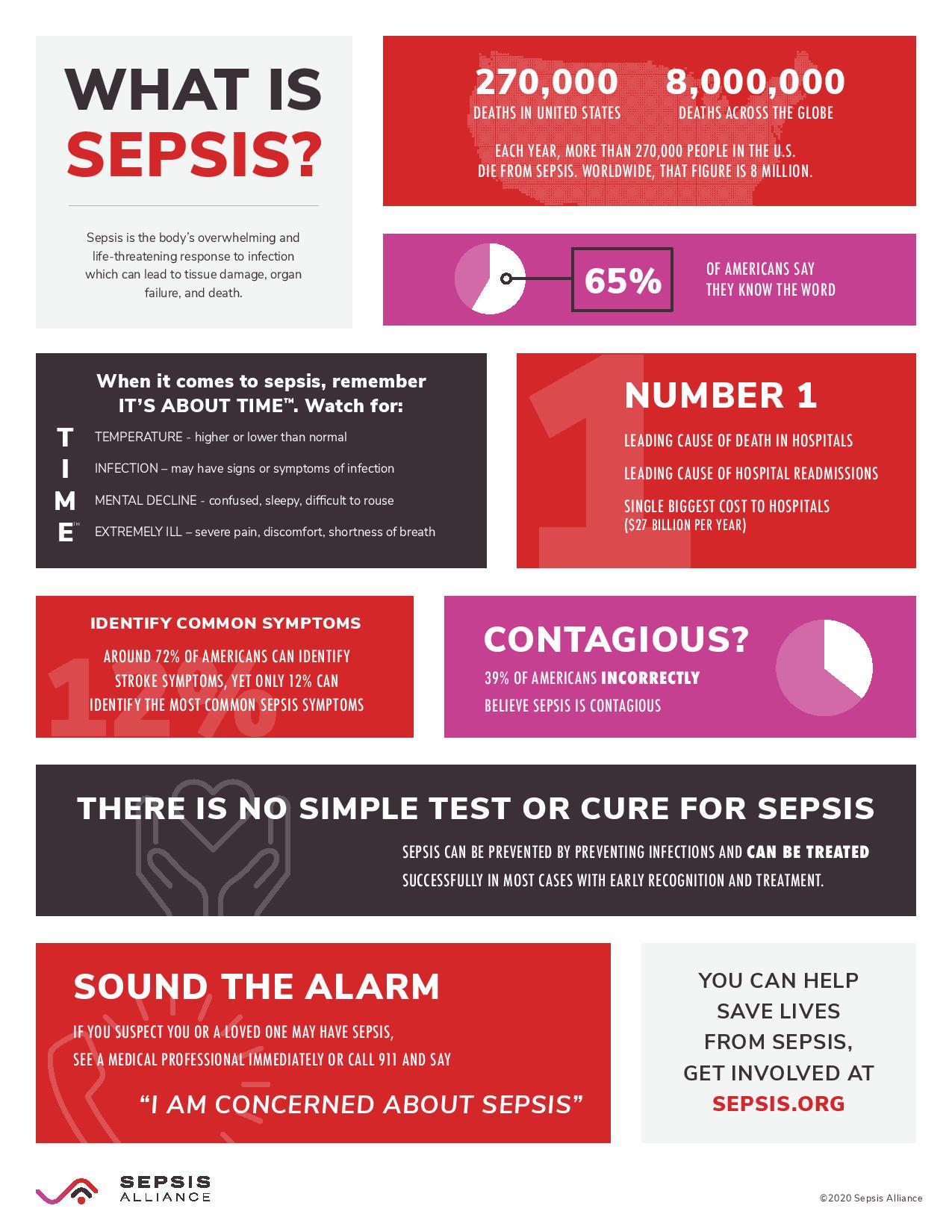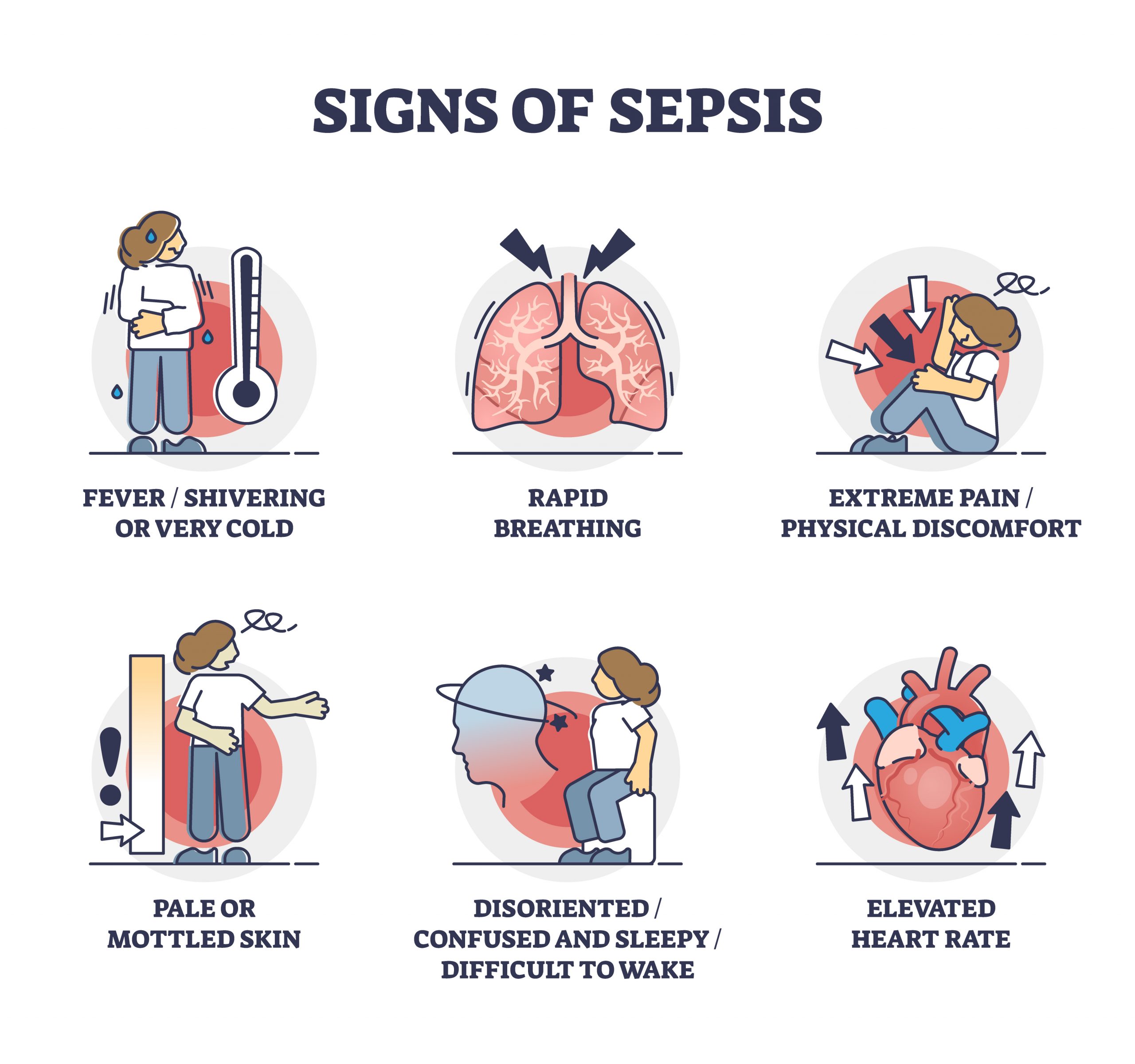To help target audience make the right decision, we doing some analysis, digging information, made Sepsis: A Life-Threatening Medical Emergency we put together this Sepsis: A Life-Threatening Medical Emergency guide.
| Key Differences | Key Takeaways |
|---|---|
| Sepsis is a life-threatening condition that occurs when the body's response to an infection damages its own tissues and organs. | Sepsis can lead to organ failure and death if not treated promptly. |
| The symptoms of sepsis can include fever, chills, rapid heart rate, rapid breathing, and confusion. | Sepsis is diagnosed with a blood test that measures the levels of certain proteins in the blood. |
| Sepsis is treated with antibiotics and fluids. | In severe cases of sepsis, surgery may be necessary to remove infected tissue. |
FAQ
This section addresses frequently asked questions concerning sepsis, its symptoms, and treatment. With prompt recognition and proper medical care, it is possible to improve outcomes for individuals experiencing this life-threatening condition.
Question 1: What is sepsis?
Sepsis, a life-threatening medical emergency, arises when the body's response to an infection damages its own tissues and organs.
Question 2: What are the symptoms of sepsis?
Common signs include fever, chills, rapid breathing, and an elevated heart rate. Additionally, confusion and disorientation may occur.
Question 3: What causes sepsis?
Any infection can lead to sepsis, but common sources include pneumonia, urinary tract infections, and abdominal infections.
Question 4: Who is at risk for sepsis?
Individuals with weakened immune systems, such as the elderly, young children, and those with chronic illnesses, are more susceptible to sepsis.
Question 5: How is sepsis treated?
Early diagnosis and treatment are crucial. Treatment typically involves administering antibiotics, fluids, and medications to support blood pressure.
Question 6: What are the long-term effects of sepsis?
Survivors of sepsis may experience ongoing health issues, including organ damage, cognitive impairment, and post-traumatic stress disorder.
Summary: Sepsis is a medical emergency requiring prompt recognition and treatment. Understanding its symptoms and risk factors can help individuals seek help early and improve their chances of recovery. Early diagnosis and appropriate medical care can significantly improve outcomes for individuals with sepsis.
Next Article Section: For more in-depth information, refer to the comprehensive article on sepsis.
Sepsis is a life-threatening medical emergency that can develop from a - Source www.facebook.com
Tips
Sepsis is a life-threatening condition that requires prompt medical treatment. If you or someone you know is experiencing symptoms of sepsis, it is crucial to seek immediate medical attention. Here are some important tips to keep in mind:

Recognizing Symptoms Is Key For Sepsis Survival | Owensboro Health - Source www.owensborohealth.org
Tip 1: Recognize the Symptoms
The symptoms of sepsis can vary depending on the underlying infection. Common signs include high fever or low body temperature, rapid heart rate, difficulty breathing, confusion, and extreme pain. If you experience any of these symptoms, seek medical attention immediately.
Tip 2: Get Diagnosed Quickly
Early diagnosis and treatment are essential for improving the chances of survival. If you suspect that you or someone you know has sepsis, seek medical attention at the nearest emergency department. A blood test and other tests may be performed to confirm the diagnosis.
Tip 3: Start Antibiotic Treatment
Antibiotic treatment is the primary treatment for sepsis. It is important to start antibiotics as soon as possible to fight the infection and prevent further complications. The type of antibiotic used will depend on the specific bacteria causing the infection.
Tip 4: Provide Fluid Resuscitation
Sepsis can lead to dehydration and low blood pressure. Intravenous fluids may be given to improve hydration and maintain blood pressure. In severe cases, vasopressors may be necessary to support blood pressure.
Tip 5: Manage Organ Dysfunction
Sepsis can lead to organ dysfunction, such as kidney failure, respiratory failure, or liver damage. In these cases, additional treatments may be necessary to support the affected organs.
Summary
Sepsis is a medical emergency that requires prompt attention. By recognizing the symptoms, getting diagnosed quickly, starting antibiotic treatment, providing fluid resuscitation, and managing organ dysfunction, you can help improve the chances of survival for a person with sepsis.
Sepsis: A Life-Threatening Medical Emergency
Sepsis is a complex medical condition that can develop from an infection. It is a life-threatening condition that requires immediate medical attention.
- Definition: Sepsis is a life-threatening condition that occurs when the body's response to an infection damages its own tissues and organs.
- Causes: Sepsis can be caused by any type of infection, but it is most commonly caused by a bacterial infection.
- Symptoms: Sepsis can cause a variety of symptoms, including fever, chills, rapid heart rate, and difficulty breathing.
- Diagnosis: Sepsis is diagnosed based on the patient's symptoms and a physical examination.
- Treatment: Sepsis is treated with antibiotics and other medications, and in some cases, surgery.
- Prevention: Sepsis can be prevented by taking steps to prevent infection, such as washing hands frequently and getting vaccinated.

Sepsis: Causes | Symptoms| Treatment | Prevention | Fabwoman - Source fabwoman.ng
Sepsis is a serious medical condition, but it can be treated if it is diagnosed and treated early. If you think you may have sepsis, it is important to seek medical attention immediately.
Sepsis: A Life-Threatening Medical Emergency
Sepsis is a life-threatening condition that occurs when the body's response to an infection damages its own tissues and organs. It is a medical emergency that requires prompt diagnosis and treatment.

Sepsis – A Medical Emergency - JASE Medical - Source jasemedical.com
Sepsis is caused by an infection, which can be bacterial, viral, or fungal. The infection can start anywhere in the body, but it most commonly occurs in the lungs, abdomen, or urinary tract. When the infection enters the bloodstream, it triggers a systemic inflammatory response that can lead to sepsis.
The symptoms of sepsis can vary, but they often include fever, chills, rapid heart rate, and shortness of breath. Sepsis can also cause confusion, disorientation, and organ failure.
Sepsis is a serious medical condition that can be fatal if not treated promptly. The mortality rate for sepsis is about 30%. However, early diagnosis and treatment can improve the chances of survival.
If you think you or someone you know may have sepsis, it is important to seek medical attention immediately.
Table: Key Insights on Sepsis
| Concept | Key Insight |
|---|---|
| Definition | Sepsis is a life-threatening condition that occurs when the body's response to an infection damages its own tissues and organs. |
| Causes | Sepsis is caused by an infection that enters the bloodstream and triggers a systemic inflammatory response. |
| Symptoms | Symptoms of sepsis can include fever, chills, rapid heart rate, and shortness of breath. |
| Treatment | Sepsis is a medical emergency that requires prompt diagnosis and treatment, including antibiotics and intravenous fluids. |
| Mortality | The mortality rate for sepsis is about 30%. |
Conclusion
Sepsis is a serious medical condition that can be fatal if not treated promptly. It is important to be aware of the symptoms of sepsis and to seek medical attention immediately if you think you or someone you know may have this condition.
With early diagnosis and treatment, the chances of survival from sepsis can be improved.

